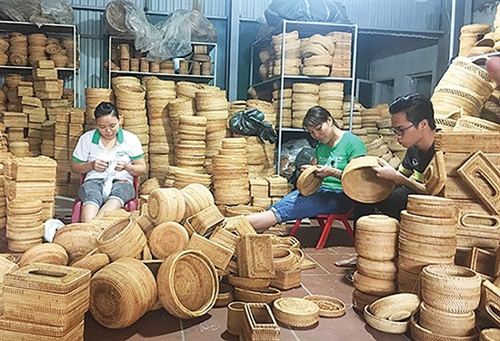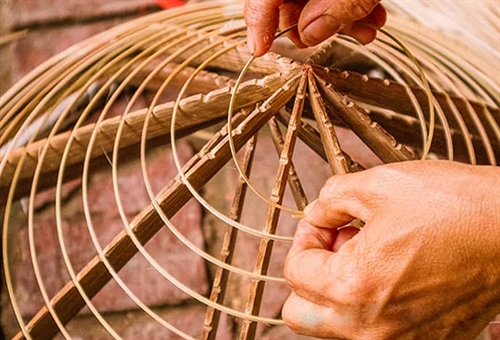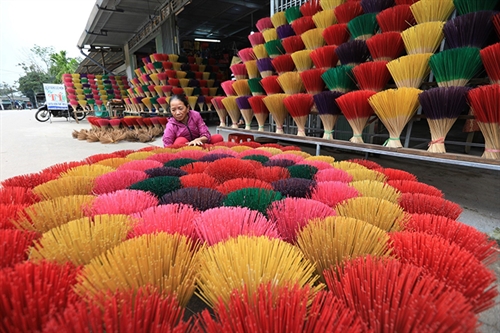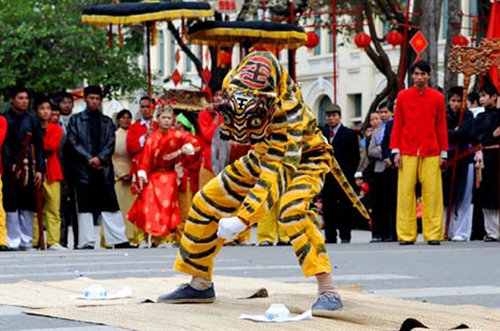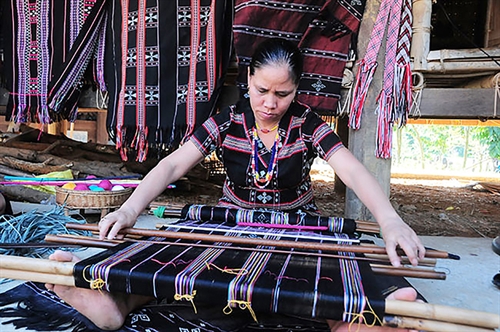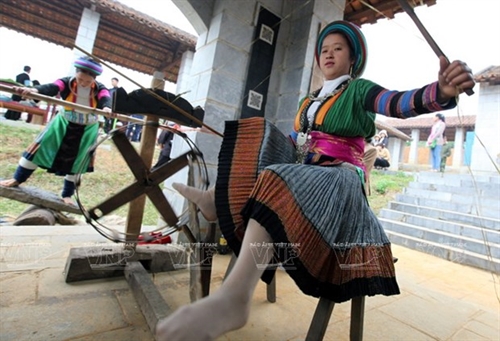Do Thi Nguyet Que
As soon as a visitor sets foot in Kim Bong traditional carpentry village in the central province of Quang Nam, he will immediately hear the sounds of wood chiseling, cutting and drilling echoing from every corner of the village.
Located on the downstream right bank of Thu Bon river in Cam Kim commune, Hoi An town, Kim Bong traditional carpentry village is renowned for hand carved wood products ranging from wooden furniture, statues and souvenir articles to impeccable carving architecture of centuries-old houses, temples and pagodas.
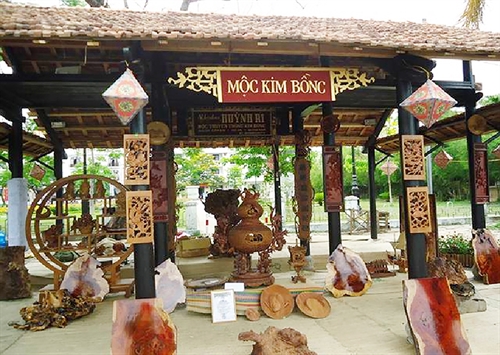 |
| Products of Kim Bong carpentry village, including an incense-burner carved with the image of 1,000 dragons__Photo: https://dulichdanang24h.com/ |
It is believed that Kim Bong carpentry ancestors had migrated there from northern delta and northern central regions, particularly Thanh Hoa, Nghe An and Ha Tinh provinces, in the 15th century. Huynh, Truong, Phan, and Nguyen were the four major families that jointly formed the village.
According to artisan Huynh Ri, one of the oldest wood-carvers who is now running a woodwork workshop in the village, at first, the village was called Kim Giang in which the word “Giang” means river and later renamed as Kim Bong which means a sand islet emerging in the middle of the river. The location of the village provided favorable conditions for transporting material timber, thus facilitating the development of the art of wood-carving and shipbuilding here.
Kim Bong carpentry was one of the traditional crafts that saw strong development when Hoi An became a busy and important port in Xu Dang Trong (the central and southern Vietnam today) at the end of the 16th and early 17th century. The name of Kim Bong village and its carpentry craft were mentioned in “Phu bien tap luc” (Miscellaneous Records of Pacification in the Border Area), written by scholar Le Quy Don in 1776. Together with the development of Hoi An as an international port, Kim Bong carpenters had opportunities to learn wood carving techniques from Japanese, Chinese and Western artisans. The application of these techniques, together with the characteristic style of Kim Bong carpenters, had helped create unique beauty and delicacy for the village’s works.
Today, the simple features of hand engraved wood works in the village still leave an unforgettable memory for tourists once they come here. All products are meticulously carved, chiseled and engraved. While wood carvings of other localities are much influenced by the northern feudal culture with symbolic patterns of powerful creatures such as dragons and phoenixes, those of Kim Bong are affected more by nature with the images of flowers, birds and vegetation while depicting the beauty of landscape and people.
Unlike other villages’ products, Kim Bong hand carved wooden items are neither polished nor painted to retain the timber original color. As time goes by, the color darkens and presents a kind of simple and elegant beauty.
Artisan Huynh Ri, who was bestowed the honorary title Emeritus Artisan in 2010, has made great contributions to the village’s development. In the past, wood carving techniques used to be considered heirloom secrets that were handed down among family members. But today, in order to preserve and promote the village’s traditional craft, Huynh Ri, together with other artisans, has opened training courses on traditional carpentry craft for hundreds of villagers. With the support from the State and international organizations, since 1996, more than 100 skillful wood carvers have been trained. Kim Bong traditional carpentry village that was “almost vanished” during the war has now revived with about 200 craftsmen and 20 wood carving workshops.
 |
Producing wooden artwork in Kim Bong carpentry village__Photo: Tran Viet/VNA |
| Producing wooden artwork in Kim Bong carpentry village__Photo: Tran Viet/VNA |
From past to present, the hallmarks of carpenters from the village can be seen in architectural works all over the country, ranging from ancient houses in Hoi An town and Hue citadel to temples and pagodas. One of typical works that show the skillfulness of Kim Bong carpenters is an incense burner carved with the image of 1,000 dragons which was displayed at the millennial anniversary of Thang Long-Hanoi in 2010. In 2014, young craftsmen from the village had managed to curve the largest-ever ironwood Buddha statue which weighs four tons and is three meters high and 1.6 meters wide for a pagoda in Ho Chi Minh City.
Kim Bong carpentry craft was recognized as the national cultural heritage in June 2016. Since then, the development of the village is associated with tourism so as to further promote the traditional carpentry craft in a more sustainable manner.-

